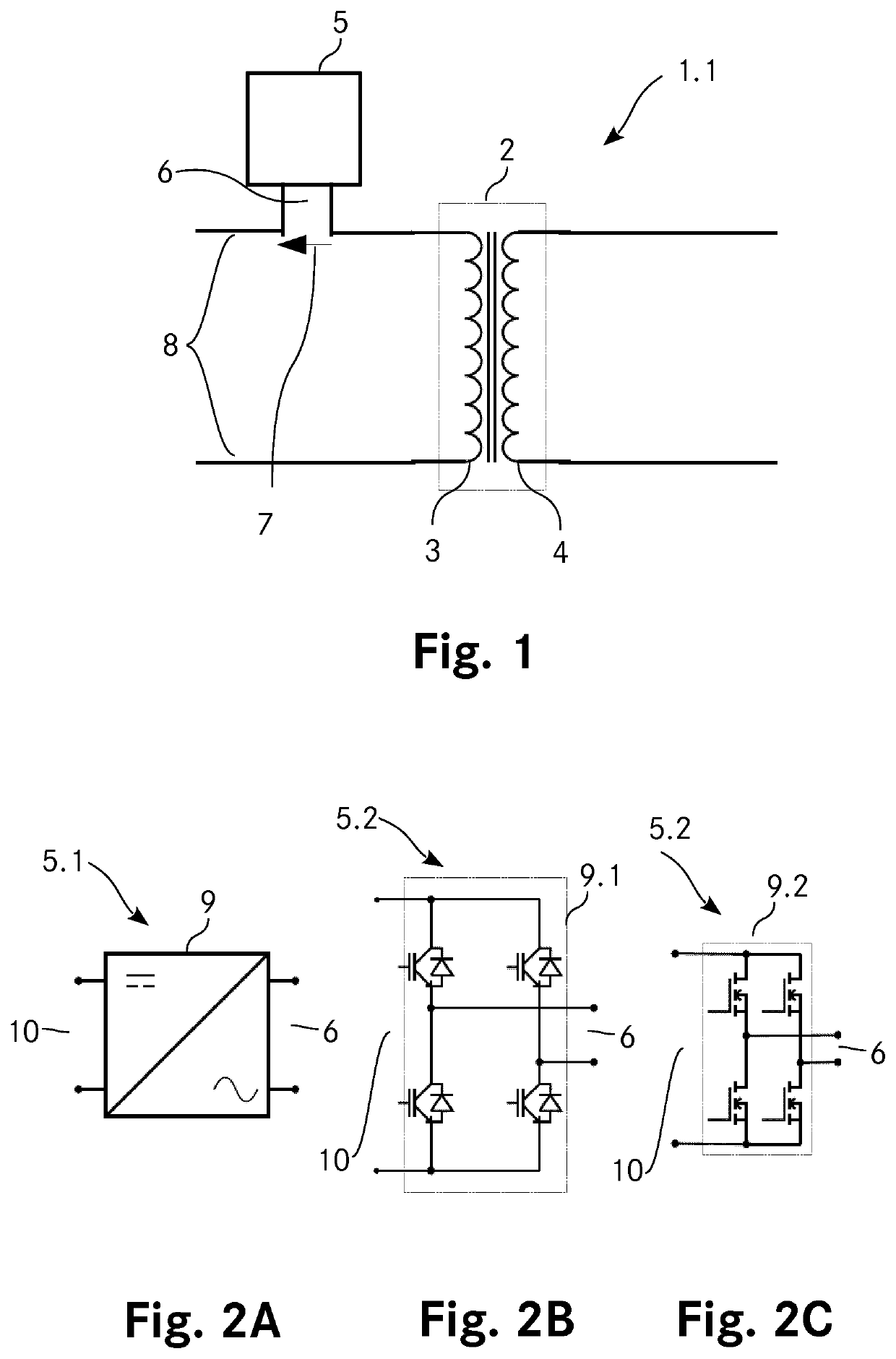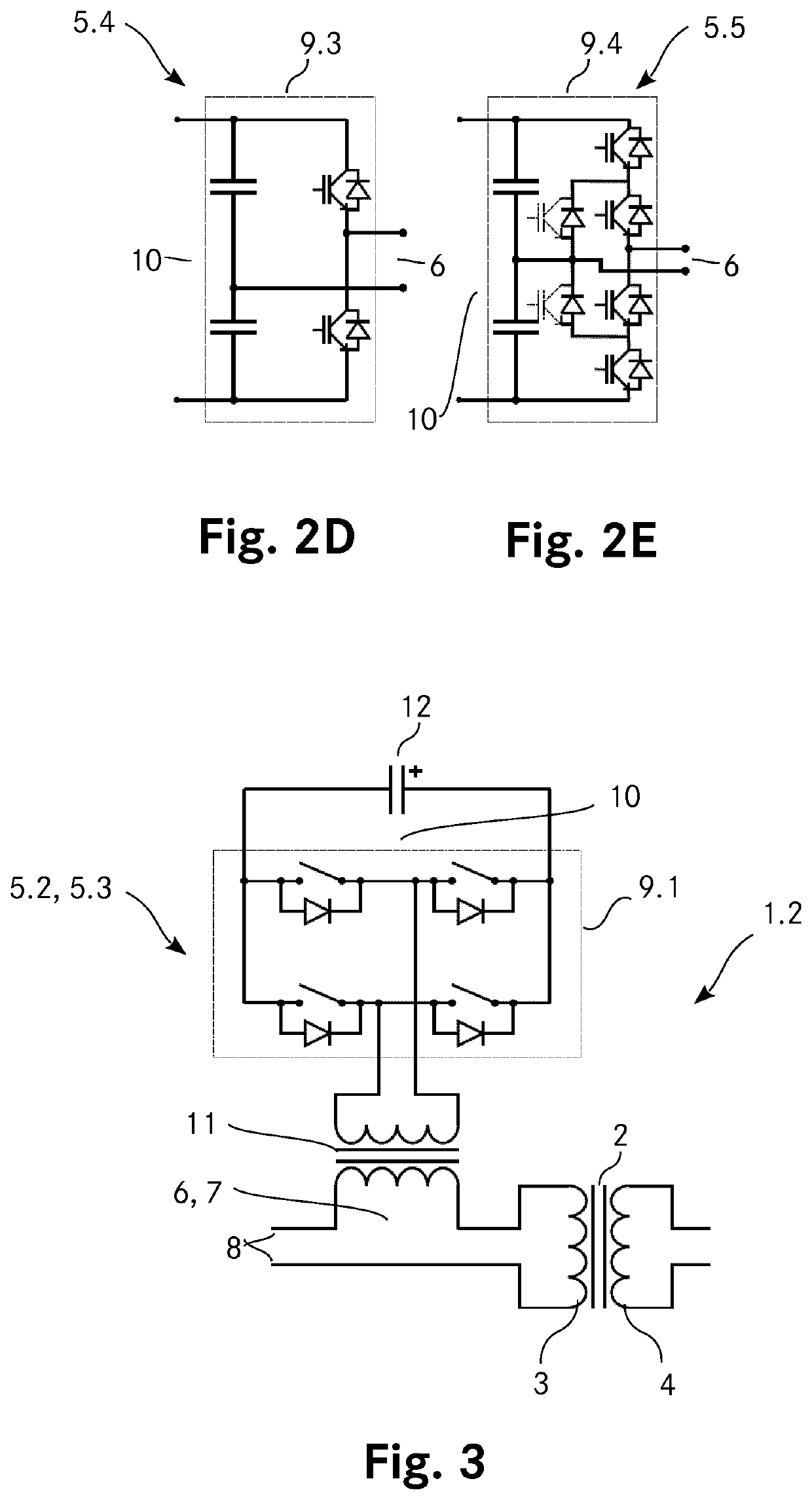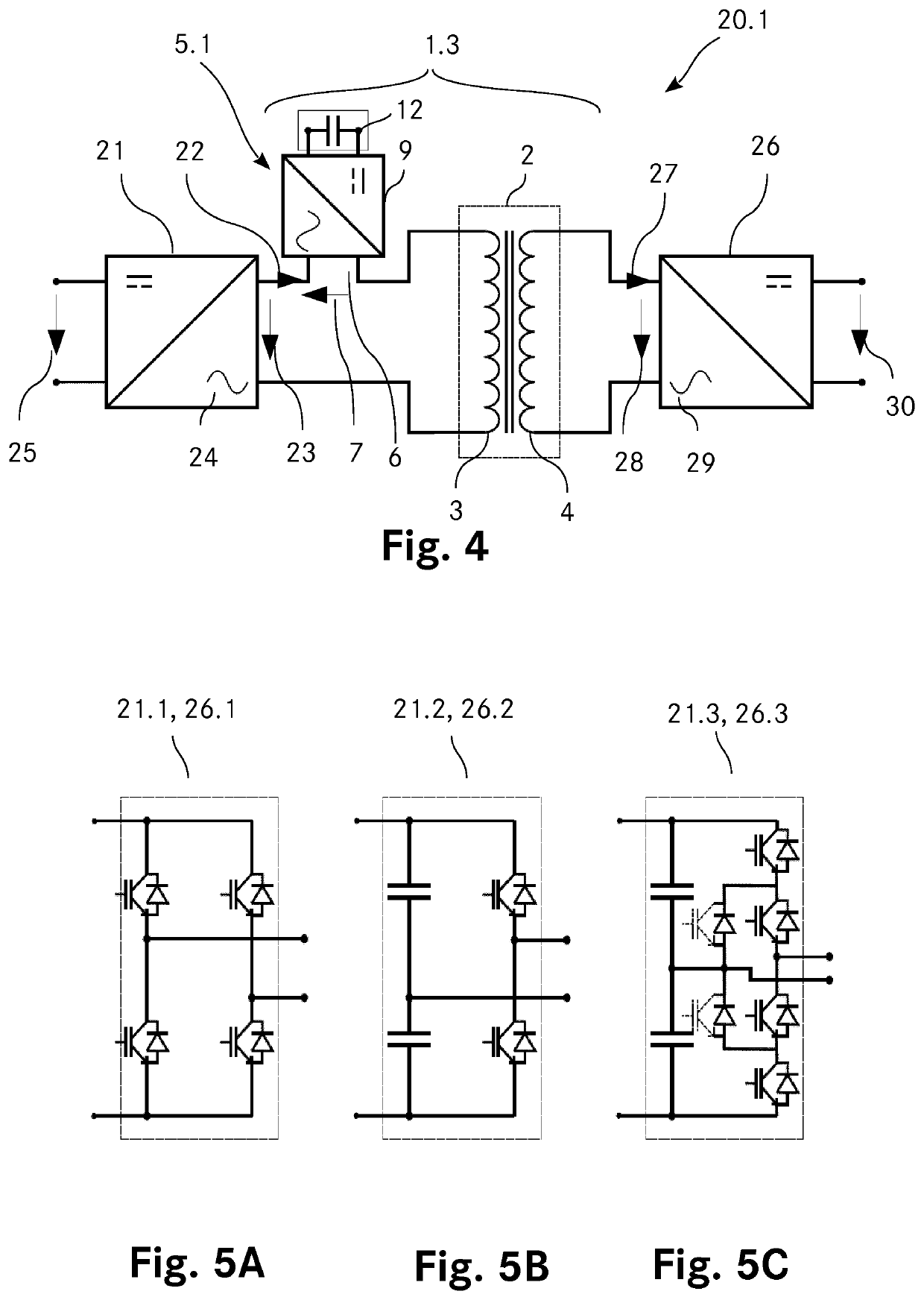Efficient electric power conversion
- Summary
- Abstract
- Description
- Claims
- Application Information
AI Technical Summary
Benefits of technology
Problems solved by technology
Method used
Image
Examples
first embodiment
[0138]FIG. 1 shows a power transmission unit 1.1 according to the invention. The power transmission unit 1.1 comprises a main transformer 2 having a first winding 3 and a second winding 4. The power transmission unit 1.1 further comprises a switchable auxiliary AC unit 5 with an auxiliary AC side 6. The auxiliary AC unit 5 provides a tunable auxiliary AC voltage 7 across the auxiliary AC side 6. The auxiliary AC side 6 of the auxiliary AC unit 5 is connected in series with the first winding 3 of the main transformer 2 to form a series connection 8. The series connection 8 of the power transmission unit 1 can be connected to an AC power unit (not shown). For proper operation of the power transmission unit 1.1, the series connection 8 should not be shorted.
[0139]FIG. 2A shows a first possible embodiment of the switchable auxiliary AC unit 5.1. In the present case, the auxiliary AC unit 5.1 comprises a converter 9 which is a DC AC converter. The auxiliary AC unit 5.1 has in addition to...
second embodiment
[0148]Although shown together in this second embodiment of the power transmission unit 1.2, the auxiliary AC unit 5.2, 5.3 is not required to comprise the auxiliary transformer 11 and the energy storage 12. Thus, the auxiliary transformer 11 connecting the AC side of the full bridge converter 9.1, 9.2 in series with the first winding 3 of the main transformer 2 can be omitted. Similarly, the energy storage 12 and / or the full bridge converter 9.1 can be omitted.
[0149]FIG. 4 shows a first possible embodiment of a power conversion unit 20.1 comprising a power transmission unit 1.3 according to the invention. The power conversion unit 20.1 comprises a first AC power unit 21 providing a first current 22 and a first AC voltage 23 across a first AC side 24 of the first AC power unit 21. The first AC power unit 21 is a DC AC converter fed by a first main voltage 25 which is in this embodiment of the power conversion unit 20.1 a DC voltage. The first AC side 24 of the first AC power unit 21 ...
fourth embodiment
[0168]FIG. 10 shows a fifth possible embodiment of a power conversion unit 20.5 which comprises a first AC power unit 21.4 with a three phase converter and the second AC power unit 26.4 with another three phase converter. The main transformer 2 of this power conversion unit 20.5 is as well configured as three phase transformer with a first winding 3 having three phases and a second winding 4 having three phases. The three AC phases of the converter of the first AC power unit 21.4 are each connected in series to a different full bridge converter 5.2, 5.3 which is further connected to a respective phase of the first winding 3 of the main transformer 2. The second AC power unit 26.4 is connected to the second winding 4 of the main transformer 2.
[0169]FIG. 11 shows a sixth possible embodiment of a power conversion unit 20.6. This embodiment is in most parts identical to the power conversion unit 20.1 shown in FIG. 4 but comprises an additional control unit 33. This control unit 33 contr...
PUM
 Login to view more
Login to view more Abstract
Description
Claims
Application Information
 Login to view more
Login to view more - R&D Engineer
- R&D Manager
- IP Professional
- Industry Leading Data Capabilities
- Powerful AI technology
- Patent DNA Extraction
Browse by: Latest US Patents, China's latest patents, Technical Efficacy Thesaurus, Application Domain, Technology Topic.
© 2024 PatSnap. All rights reserved.Legal|Privacy policy|Modern Slavery Act Transparency Statement|Sitemap



